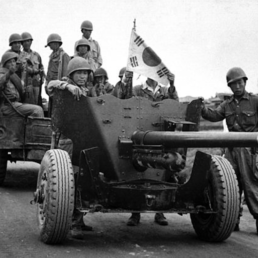On an august evening in 1982, people were heard shouting in Chhattisgarhi on the streets of Edinburgh. Singing and dancing they were enacting a play about a thief and on centrestage stood the playwright dressed as a policeman, hoping to catch a crook named Charandas.
However, Charandas isn’t your normal thief, he is honest with a sense of integrity and has vowed to never tell a lie which ultimately leads to his death. The play is a societal paradox keeping Charandas as the central character.
You must be wondering how Charandas found himself in Europe. We go back in time to 1947 when the city of Edinburgh hosted The Edinburgh International Festival to bring some life back into Europe.
It was not without its fair share of drama, though. Eight theatre groups had supposedly shown up uninvited, calling themselves the ‘Festival Adjuncts’. When they were refused entry, they sought a different way to perform around the festival. They would forever be called the ‘fringe’.
Over the years the fringe became more famous and mainstream than the official Edinburgh festival itself, drawing theater groups, comedians, individual artistes, and musicians from all over the world. In 1982, Habib Tanvir and his troupe were invited to enact a play.
Tanvir was a native of Raipur having family roots back in Peshawar. Tanvir’s father wanted him to sit for the ICS but his interests would eventually lead him to a completely different path.
The 1940s and 1950s were decades of a great renaissance of Indian art, and Tanvir found himself right in the midst of it. Having joined AIR as a producer in Bombay in the mid 40s, Tanvir became a member of the IPTA & PWA, rubbing shoulders with the likes of Sajjad Zaheer, Balraj Sahni, and Dina Pathak.
After about a decade, Athar Parvez, a friend of Tanvir from his university days at Aligarh, approached Tanvir and asked him about his plans to celebrate Nazir Diwas. Nazir Akbarabadi was an 18th-century Indian poet who is known as the “Father of Nazm”.
Tanvir thought of a dramatic form and what came out was unique and different from Proscenium theatre. Agra Bazaar, as the play was called, wasn’t confined to the stage and Tanvir got college students, teachers and villagers from Okhla to act in it, breaking norms and setting new ones.
Agra Bazar was a landmark in Indian theatre. In 1959, Tanvir formed the Naya Theatre group. Having performers from urban areas as well as from his native Chhattisgarh, the group created a niche for itself experimenting with various forms and performing in native languages.
As the years passed, awards and accolades followed. Tanvir perfected his free-flowing dramatic form, incorporating religious songs from various regions and penning ghazals, nazms, and rhymed metrical prose, which were translated from Shakespeare or Brecht.
Tanvir conceived the play Charandas Chor and staged it first in 1975. The story was originally a folktale written by Vijaydan Detha, a towering figure in Indian and Rajasthani literature. Detha’s stories have been converted into plays and films through the years.
The play’s highlight was Nacha, a Chhattisgarhi dance tradition. It’s full of paradoxes and contradictions. Tanvir not only adapted Detha’s story for the stage but perfected it in its delivery to the masses.
In the late 1970s, Peter Brook, a doyen of contemporary theatre landed in India hoping to find inspiration and gather knowledge as he would go on an unenviable journey of adapting the Indian epic Mahabharata for the stage.
As Brook toured India seeing its various performance arts, he was particularly captivated by Tanvir’s Naya Theatre group and its free-flowing dramatic form. Brook wanted to showcase Tanvir and his troupe to the whole world, and so it was.
Charandas Chor played at the Edinburgh fringe in 1982 to resounding applauses and packed audiences, most of whom barely understood a word of dialogue but still stayed and watched and were captivated by the performance.
Scotsman newspaper awarded the coveted Fringe First Prize to Charandas Chor in the middle of the first week, supposedly breaking a long-standing convention. What worked for Charandas was its universality and simple language, on which Brook complimented Tanvir.
“Tanvir’s work comes from the village viewpoint. It’s comic and it does not attack big social problems. It sticks to day-to-day questions of greed, hypocrisy, and exploitation,” said Brook.
It’s amazing how the performing arts can cut across physical, social and economic barriers with their universal appeal.
Sources: Memoirs: Habib Tanveer, Penguin Books; Habib Tanvir brings Indian folk theatre international fame, by Anita Kaul, https://www.indiatoday.in/magazine/society-and-the-arts/story/19821031-habib-tanvir-brings-indian-folk-theatre-international-fame-772336-2013-08-27
Video Source: Prasar Bharati Archives, https://www.youtube.com/watch?v=7-ViBmUrI6E




